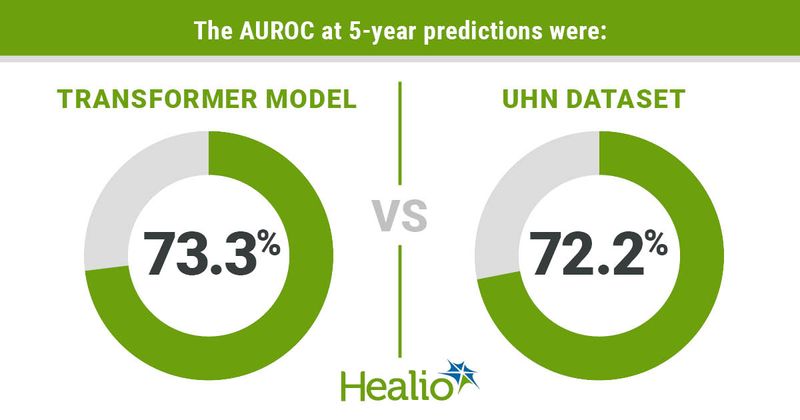Deep learning algorithms identify liver transplant recipients at risk for complications
Deep learning algorithms outperformed logistic regression models and predicted long-term outcome after liver transplantation with longitudinal data, according to study results.
“Physicians could use these algorithms at routine follow-up visits to identify liver transplant recipients at risk for adverse outcomes and prevent these complications by modifying management based on ranked features,” Osvald Nitski, BASc, from the faculty of applied science and engineering, University of Toronto, in Canada, and colleagues wrote.

Nitski and colleagues performed machine learning analysis of 42,146 liver transplant recipients from the Scientific Registry of Transplant Recipients. Investigators further assessed the transferability of the model by fine-tuning a dataset from the University Health Network in Canada (n = 3,269). The cause of death due to cardiovascular causes, infection, graft failure, or cancer within 1 year and 5 years of each follow-up examination after transplantation served as the study’s primary outcome.
“We compared the performance of four deep learning models against logistic regression, assessing performance using the area under the receiver operating characteristic curve (AUROC),” Nitski and colleagues wrote.
Results showed deep learning models outperformed logistic regression in both datasets. Investigators noted the Transformer model achieved the highest AUROCs in both datasets (P <·0001). The AUROC was 0.804 for the Transformer model across all outcomes in the SRTR dataset for 1-year predictions and 0.733 for 5-year predictions. The AUROC was 0.807 in the UHN dataset for the top-performing deep learning model for 1-year prediction and 0.722 for 5-year predictions.
“AUROCs ranged from 0·695 (0.680–0.713) for prediction of death from infection within 5 years to 0.859 (0.847–0.871) for prediction of death by graft failure within 1 year,” the investigators wrote.
